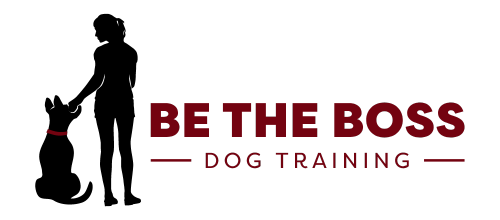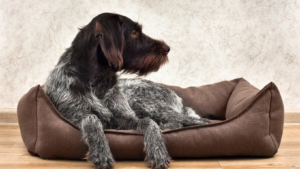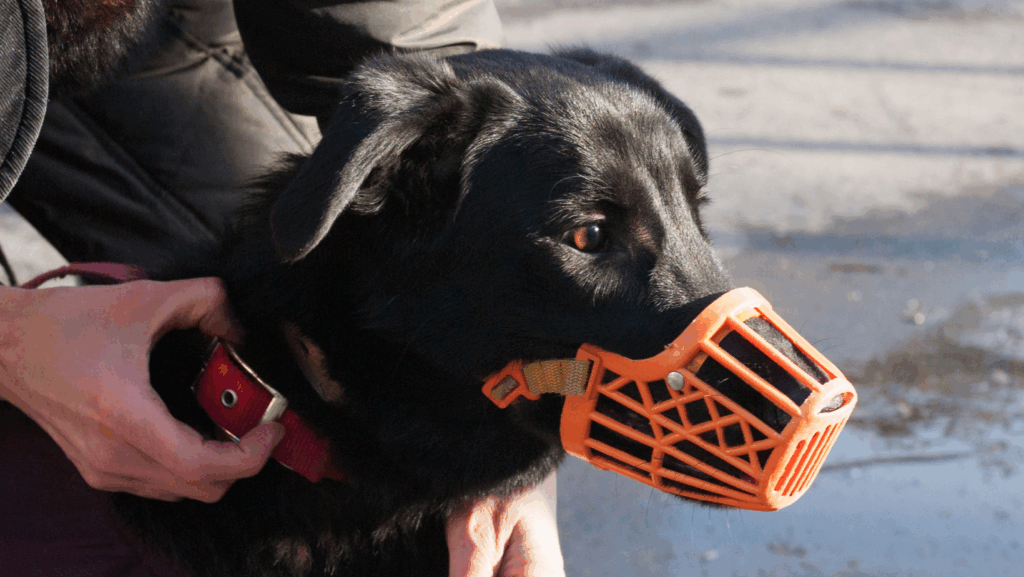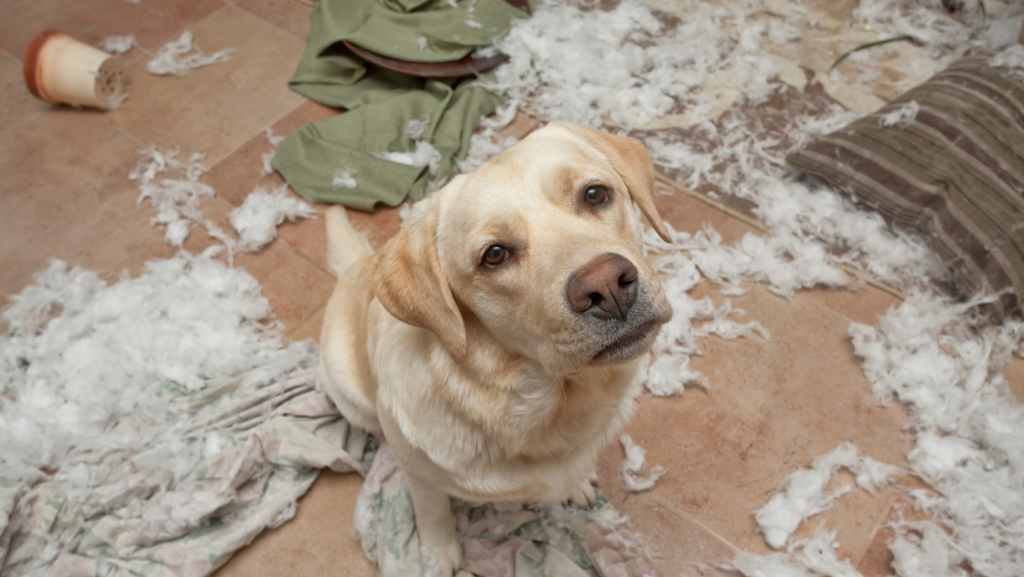Let’s cut to the chase: your dog is driving you nuts. You love them, of course — they’re cute, they cuddle, they make you laugh. But they also won’t stop pacing, barking, begging, or following you from room to room like a needy ex. You’ve probably said “go lay down” a hundred times, but it never sticks. And the more you repeat yourself, the more frustrated you get. Sound familiar?
This is exactly where place training changes the game. In this post, we’ll break down exactly why place training is one of the most effective tools out there. And spoiler alert: it’s not just for your dog’s benefit. It’s for your sanity, too.
It Gives the Dog a Clear Job (So You Can Finally Relax)
Let’s be honest: most people don’t get a dog because they want a long-term behavioral project. You probably got a dog for companionship, fun, maybe even some emotional support. But now the dog is pacing, barking, jumping, staring at you nonstop, or just generally being way too much. You didn’t sign up for this chaos. You just want to drink your coffee in peace or get through a Zoom call without being interrupted. That’s where place training comes in — it gives your dog a job so they stop making you crazy.
Dogs don’t magically “calm down” because you tell them to. They don’t understand what “go lay down” means unless you’ve taught it, and even if they do, they’ll likely get up again 30 seconds later. Place training isn’t just telling your dog to chill — it’s assigning them a specific, non-negotiable task: go to that mat, stay on it, and stop micromanaging the house. That’s their job. And when your dog has a job, you get your life back.
The truth is, most dogs act like maniacs because they have no clue what they’re supposed to be doing. They’re not trying to be annoying — they just haven’t been given direction. And dogs with no direction make up their own rules. They decide when it’s time to bark, jump, pace, follow you to the bathroom, or fling themselves into your guests. Place training ends that game. It says, “Hey, I’ve decided what your job is now. Go do it.”
And here’s the kicker: the job isn’t complicated. Your dog isn’t being asked to herd sheep or run an agility course. They’re being asked to sit their butt down and stay still. That’s it. And once they get the hang of it, it becomes one of the easiest ways to create peace in your home — and get a break from constantly dealing with their nonsense.
Plus, let’s talk about power. With place training, you’re no longer reacting to everything your dog does. You’re the one calling the shots. That means no more yelling when the doorbell rings. No more tripping over the dog in the kitchen. You tell them to go to place, and you get your space back. It’s the ultimate boundary-setting tool — and it works.
You don’t need to become a dog training nerd to use this. You just need to be tired enough of the chaos to want something different. Place training gives your dog structure, which magically turns them into a more tolerable version of themselves. And in return, you get more freedom, less stress, and maybe even that uninterrupted cup of coffee. Win-win.
If that sounds like something you need, you’re not alone — we’ve got a whole group of Utah dog owners figuring it out together. Come lurk, ask questions, or just feel less crazy about your dog. Join us here: facebook.com/groups/dogsunleashedutahcounty
It Interrupts the Cycle of Overstimulation (So Your Dog Finally Stops Acting Like a Maniac)
You know that feeling when you’re already running on low sleep, the house is a mess, your phone won’t stop buzzing, and someone asks you a simple question — and you snap? That’s overstimulation. Now imagine living like that 24/7. That’s your dog.
Dogs don’t have an off switch built in. They don’t scroll Instagram to zone out. They don’t pour a glass of wine to decompress. They react — to everything. Sounds, smells, movement, energy. The door creaks, someone walks by, the wind shifts, your tone changes — and your dog is suddenly on full alert. Now imagine that happening a dozen times an hour, every day. Over time, that constant stimulation builds up and creates a dog who is anxious, reactive, jumpy, and frankly, exhausting to live with.
Place training interrupts that cycle.
When you send your dog to “place,” you’re not just telling them where to go. You’re telling their nervous system to power down. You’re forcing them to disengage from the swirl of stimuli that’s been running the show. And while it might feel a little controlling at first, the truth is — dogs crave this kind of leadership. Just like kids, they won’t admit it, but they need someone to say, “That’s enough. Sit down. Breathe.”
Here’s where it gets psychological: dogs develop patterns, just like people. If every time the doorbell rings, they bark and spin in circles, that becomes a habitual loop. It’s not even a conscious choice anymore — it’s automatic. Place training breaks that loop. It introduces a new response to the same trigger. Doorbell rings? Go to place. Guest walks in? Stay on place. You’re not just managing behavior in the moment — you’re rewriting the dog’s emotional default.
And guess what? That benefits you more than anyone. Because when your dog isn’t living in a constant state of arousal, they stop feeding off your energy. They stop pacing while you’re trying to work. They stop reacting to every single noise outside like the apocalypse is coming. They start becoming… dare we say it… chill.
It’s not magic. It’s nervous system regulation. And it works because it removes decision-making from the equation. Your dog doesn’t have to choose how to behave anymore. You’ve made that choice for them: “Stay right there. Do nothing.” That alone is enough to calm even the most high-strung dogs — and the most overwhelmed owners.
So if you’re sitting there thinking, “I just want my dog to relax,” here’s the truth: they don’t know how. You have to teach it. Place training gives them the conditions to practice stillness, to step out of the constant sensory input, and to reset. Not just once, but over and over — until peace becomes their new normal.
And when your dog finally chills out, so do you. If your home feels like chaos and your dog’s running on fumes, it’s time to do something different. You don’t have to figure it out alone.
👉 Tap here to talk to us — let’s get your dog (and your life) back to calm.
It Builds Impulse Control Through Duration
Let’s talk about the one thing your dog is absolutely terrible at: self-control. They see food? They lunge. They hear a noise? They bark. They get excited? They’re in your lap before you can blink. And somehow, you’re supposed to manage all this while doing your actual life — working, raising kids, cooking, trying to breathe?
Place training steps in like a personal assistant who says, “I’ve got this.”
At first glance, it might seem like you’re just teaching your dog to stay on a mat. But under the surface, something much bigger is happening: you’re teaching impulse control. You’re teaching your dog to want something — to see the toy, the food, the guests, the squirrel outside — and not act on it. That’s emotional maturity. And spoiler alert: dogs aren’t born with it. They have to develop it through experience and practice. Just like toddlers.
Most people say, “My dog knows sit.” Cool. Can they sit for 10 minutes while you eat dinner and your toddler drops spaghetti on the floor? Can they hold that sit when the door opens, a guest walks in, and everything smells like steak? No? Then they don’t really know sit — they know momentary compliance. That’s not impulse control. That’s convenience… for them.
What place training does is give your dog a chance to sit in the discomfort of not getting what they want. And that’s a beautiful, frustrating, transformative thing. They learn: “I see the thing. I want the thing. But I’m not allowed to move.” And then they live through that. They survive it. They realize they don’t need to chase every urge. That right there? That’s impulse control being built, one second at a time.
The longer they hold place, the stronger that muscle gets. And over time, you don’t just have a calmer dog — you have a trustworthy one. A dog that doesn’t need to be micromanaged every second of the day. A dog you can leave in a room and not worry that your couch cushions will be shredded when you return. Isn’t that kind of freedom worth it?
Now here’s the selfish part: you benefit the most. Because when your dog learns to resist their impulses, you don’t have to spend your life managing every reaction. You don’t need to yank them back every time someone walks by. You don’t need to say “off” 200 times a day. They start thinking before acting. They pause. They self-regulate. They act like a sane creature.
And you didn’t get that by yelling, bribing, or begging. You got it by giving them one simple job: stay. Stay even when it’s hard. Stay when it’s boring. Stay when it hurts a little to wait.
The dog that can hold place can hold it together. That’s the real power. And it’s worth every second of the work.
It Creates a Predictable Calm Space (So You Can Finally Have a Life Again)
You know what’s underrated? Being left alone. Not being followed room to room. Not being stared at while you eat. Not stepping over a dog every time you walk through the house like you’re in some emotional hostage situation.
Dogs don’t just “chill” on their own. If they did, you wouldn’t be reading this. They follow you because they don’t know what else to do. They obsess over you because no one’s taught them how to just exist without micromanaging your every move. That’s not a “bond.” That’s a codependent nightmare.
Place training fixes this by creating what your dog has probably never had: a predictable, calm space that actually means something. Not just a bed. Not just a cute setup in the corner they occasionally nap on. But a designated, non-negotiable zone of peace — one that you assign, reinforce, and protect. It becomes their reset button. Their boundary. Their home base. And it gives you the gift of space.
Here’s the psychological magic: dogs don’t just need direction — they crave emotional clarity. Place becomes that clarity. Over time, it becomes a cue that tells their brain, “This is when we relax. This is when we let go.” And that’s a massive relief for a dog who’s used to scanning the world for danger, attention, or action 24/7.
You’re not just asking them to lie down. You’re giving them a pattern. Predictability. Repetition. Structure. And dogs thrive in that. You’re creating a physical location where peace is the only option — and their brain starts associating that spot with calm, stillness, and zero demands. It’s like crate training without the crate. It’s freedom without chaos.
And you know what that means for you?
You get to live again. You get to move around your house without being tracked like a criminal. You get to host people without your dog spiraling into a tornado of excitement. You get to work, cook, rest, breathe — while your dog actually exists in a calm, reliable state. Without medication. Without yelling. Without running them to exhaustion every day just to get 15 minutes of peace.
Place training creates that balance — not by shutting the dog down, but by showing them what calm looks like. What it feels like. And what it earns them: your trust, your freedom, and maybe even access to more of your life, not less.
Because here’s the truth: when your dog can handle stillness, they can handle anything.
And you? You can finally stop managing every little thing — and start enjoying your dog again.
Final Thoughts: Calm Dog, Calm Life
At the end of the day, place training isn’t about being a control freak. It’s about creating peace — for your dog and for you. It gives your dog structure, breaks the chaos loop, teaches them to pause before acting, and offers them a predictable space to reset. All of that adds up to one thing: less stress for everyone in the house.
This isn’t about perfection. It’s about finally getting some breathing room. About not having to babysit a grown animal 24/7. About being able to enjoy your dog instead of constantly managing them.
If you’re tired of repeating yourself, if your house feels more like a circus than a home, place training might be the thing you didn’t know you were missing.
And if you want to take it a step further, crate training can be a powerful next move.
Try it. Stick with it. Your dog doesn’t need to be perfect — just predictable. And honestly, so do you.





